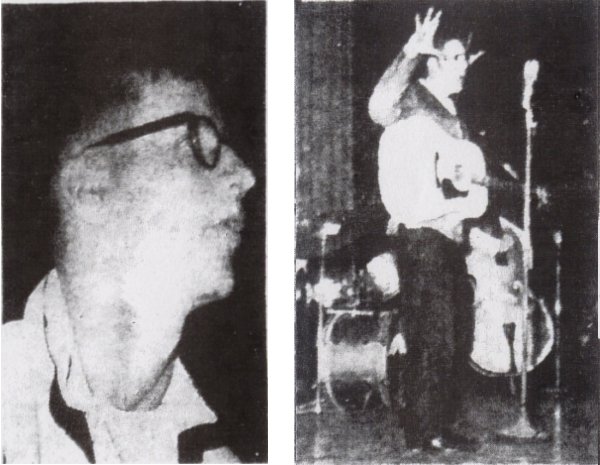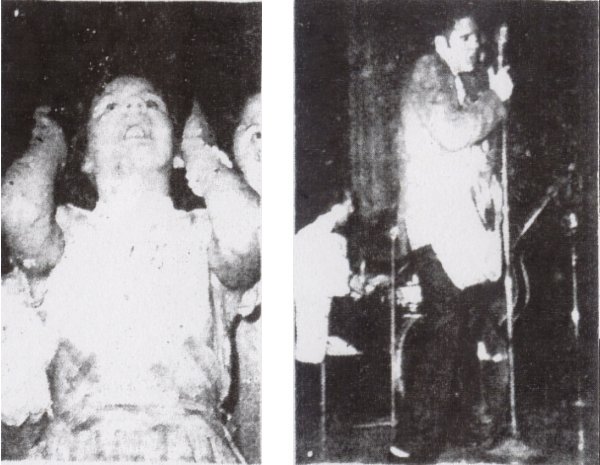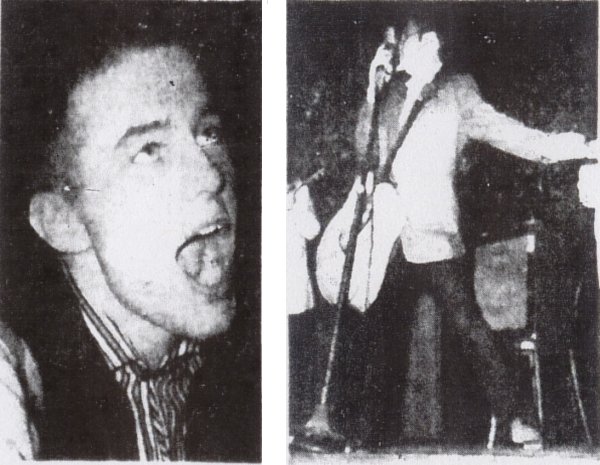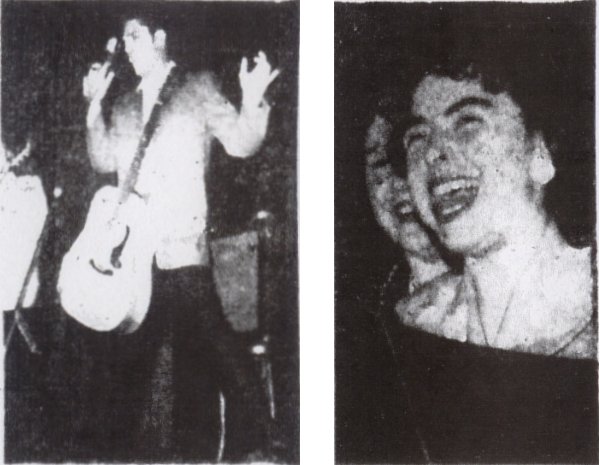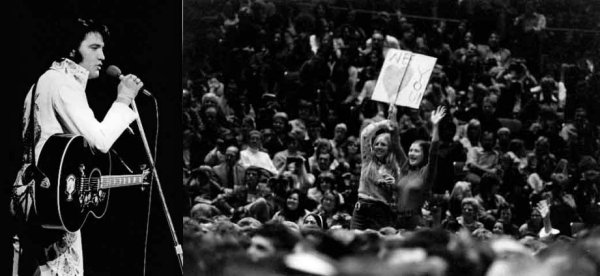 |
St. Paul Auditorium
The St. Paul (Municipal) Auditorium in St. Paul, Minnesota was built between 1906 and 1907 and was located downtown between W 5th and W 4th streets west of the St. Paul Hotel. The W 4th Street side had a 2nd, 3rd and 4th level rows of windows while sometime after 1910 the W 5th Street side had a tall vertical sign that read "Auditorium." It was used for legitimate theater and conventions.
Always in competition with nearby Minneapolis, the city began construction of an addition to the St. Paul Auditorium which would consist of a much larger arena adjacent to the existing building. The addition was designed by renowned African American municipal architect Clarence W. Wigington, and built between 1931 and 1932 as the Civic Center.
Among other things, the facilities were used to host concerts, conventions, circuses, ice shows, rodeos and sporting events. It could accommodate seating from 8,000 to 15,000 with a secondary auditorium for legitimate theater and stage shows at 2800. The rink and floor space was 100 feet by 200 feet and a ceiling height of 88 feet. The legitimate stage had a proscenium opening 60 feet wide and 40 feet high with 53 feet from the foot lights to the back wall.
The Auditorium has hosted some of the most recognizable performers. As a hockey rink it had the city's first artificial ice rink and was one of the University of Minnesota hockey team's home rinks from the 1930s until 1950s. The Lakers used to also play basketball there when their regular home, the nearby Minneapolis Auditorium, was not available. In 1951 the general manager, Edward Furni, referred to it as somewhat of "white elephant" in the summer months but found much success with the resurrection of summer music series.
On May 13th, Mother's Day, in 1956 Elvis, Scotty, Bill and DJ started their first Midwest tour with an afternoon appearance at the St. Paul Auditorium and later that evening in Minneapolis. The Twin City appearances were promoted by T. B. Skarning Enterprises of Minneapolis and according to Alan Hanson, the author of Elvis '57: The Final Fifties Tours, Skarning, anticipating a larger turnout, had booked the arena in St. Paul while also reserving the auditorium theater for overflow. Ads in the local papers began appearing on May 7th.1
Skarning had previously promoted and booked Opry and other country tours in the area and Midwest. The boys had just completed a two week appearance in Las Vegas at the New Frontier the previous week and were now touring with a six act five-star variety show supplied by Al Dvorin in addition to the Jordanaires. This show, as an opening act, also featured Augie Garcia, a popular local from St. Paul's West Side who performed in shorts. The opening was short lived because as Peter Guralnick has written, from this tour on the Colonel would not allow any other performer who might be considered a rival to appear on the show. The days of Elvis sharing a bill with contemporaries were over.
Though they performed later that night at the Minneapolis Auditorium, the reviews in both the St. Paul Pioneer Press and the Minneapolis Tribune basically covered the show in St. Paul with nearly only a mention of the Minneapolis show, the latter though, was heavily photographed. While one paper reported a crowd of 3,000, the other put it at 4,000. However, his most critical review of the Twin City appearances would come a week later (see Minneapolis Auditorium). The tour that month would also take them to La Crosse Wisconsin, back to Memphis then Little Rock, Springfield Missouri, Wichita Kansas, Lincoln and Omaha, Nebraska, Topeka Kansas, Des Moines and Sioux City Iowa, Kansas City Missouri, Detroit, Columbus and then complete in Dayton, Ohio.
On August 30, 1968, an incident at a dance at the original Auditorium, also known as Stem Hall, erupted into a riot when a policeman responding to the call for assistance was wounded by gunfire. The incident sparked a full-scale riot that rapidly spread to the streets, where large numbers of citizens hurled bottles, rocks and other debris at police lines. The rioting continued in the Selby-Dale area well into the early morning hours resulting in extensive vandalism and property damage for area businesses and private citizens in the area. The disorder continued for the next 24 hours, eventually resulting in the wounding of three officers by sniper fire.2
In 1973 a new 16,000 seat Civic Center was built and the remaining arena became home to the Minnesota Fighting Saints hockey team in the fall of 1972. The following year they moved next door to the newer Saint Paul Civic Center. Elvis himself would return to St. Paul twice and perform several shows in the new Civic Center on October 2nd and 3rd in 1974 and April 30th in 1977.
The old Auditorium was razed in 1982. In 1984 the former and remaining arena was renovated and renamed for Roy Wilkins, a St. Paul native, Civil rights leader and former director of the NAACP. It has since hosted acts such as The Grateful Dead, David Bowie, KISS, Bruce Springsteen and Bob Dylan (himself born and raised in Minnesota) among others. On January 1st in 1985 the Ordway Center for the Performing Arts opened, built partly on the site of the original St. Paul Auditorium.
The St. Paul Civic Center only lasted until 1998 and itself was replaced by the Xcel Energy Center in 2000. Today, the 5,500 seat Roy Wilkins Auditorium is part of the St Paul River Centre complex at 175 Kellogg Boulevard West and adjacent to it on its former W 4th St. side. It also currently hosts the Minnesota RollerGirls roller derby league.
Though the original St. Paul Auditorium is long since gone, a part of it, at least, is still making music and entertaining crowds. The Skinner Pipe organ that was installed in 1921 was salvaged, restored and reinstalled in Boston's Old South Church where it resides today. Page added February 13, 2013 Much of the history of the St. Paul Auditorium presented here was compiled from several sources, including The Minnesota Historical Society, Billboard Magazine, the Vintage Minnesota Hockey History, the Legendary Roy Wilkins Auditorium and the Xcel Engery Center. Special thanks to Scott Hanson of the Southdale-Hennepin Area Library for his assistance with this page. 1
according to "St. Paul, 1956 … An Open Letter to Elvis Presley"
courtesy Elvis
History Blog by Alan
Hanson |
||||||||||||||||||||
|
All photos on this page unless otherwise indicated are the property of the designated persons or organization. |
|||||||||||||||||||||

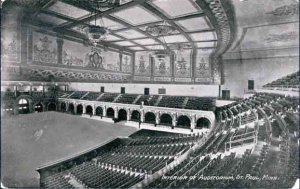
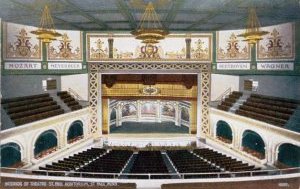

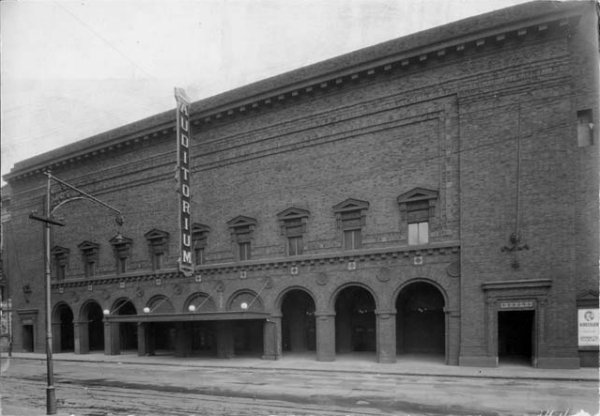


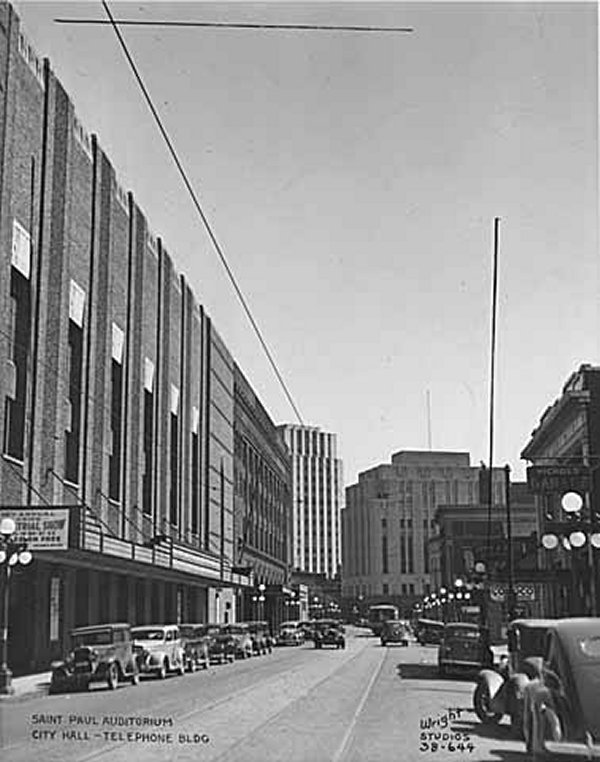
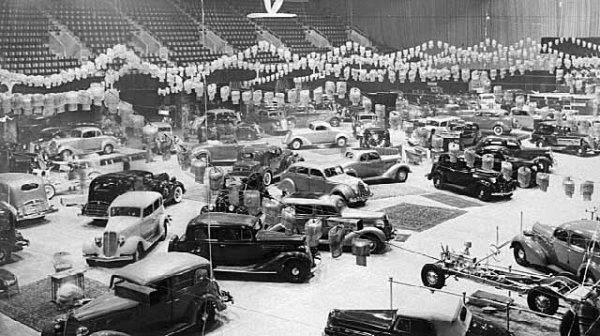
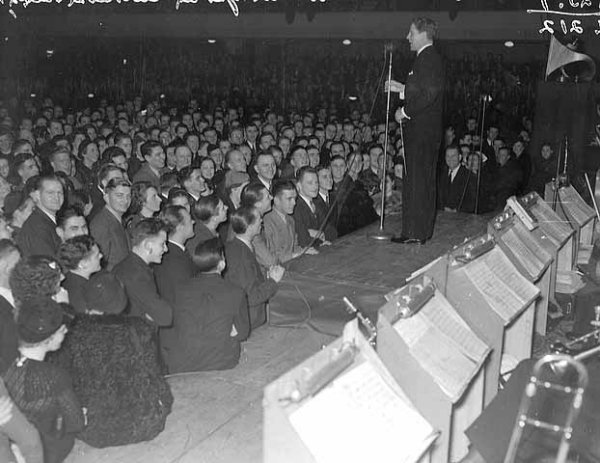
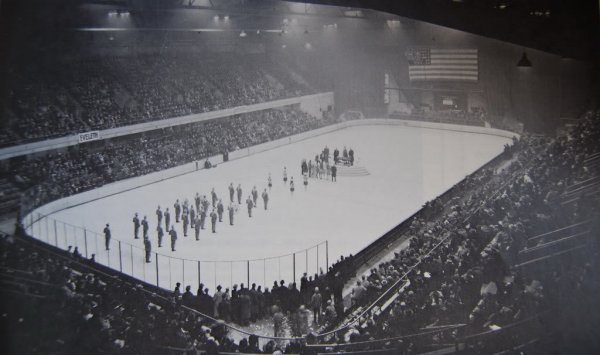

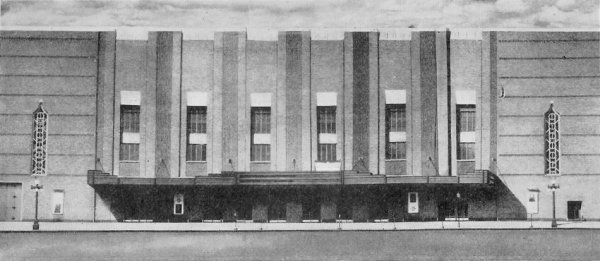


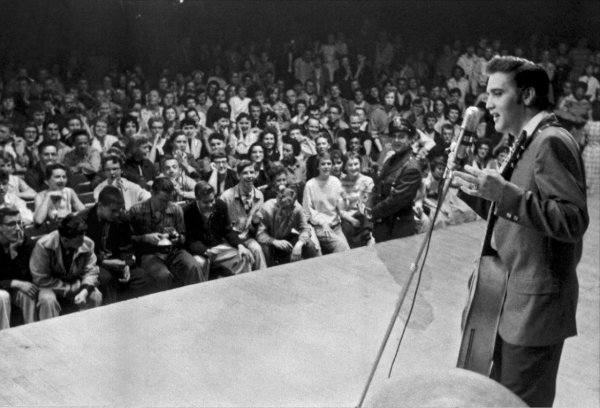
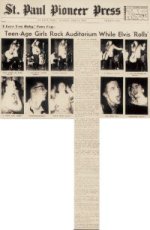 The St. Paul Pioneer Press review was as follows:
The St. Paul Pioneer Press review was as follows:
